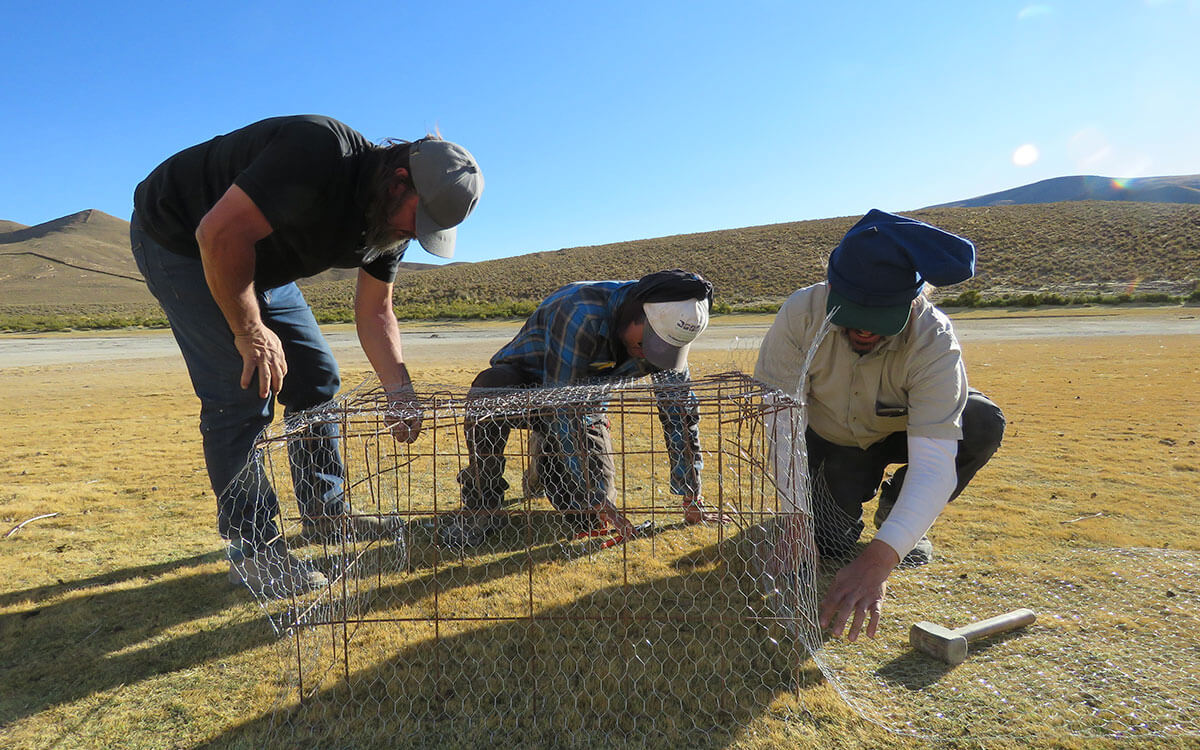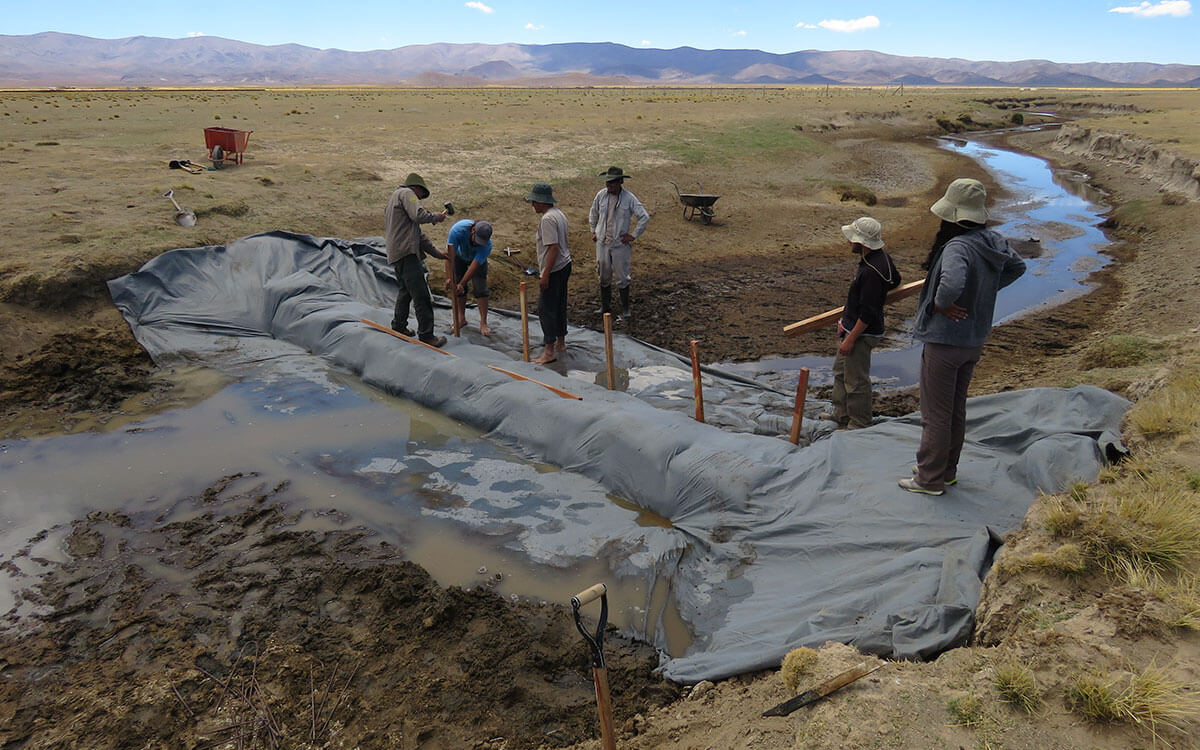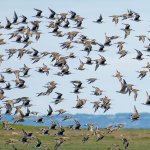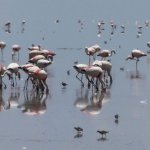By Heber Sosa Fabre and Nidia Amaya, Wetlands International
Laguna de los Pozuelos, like many High-Andean wetlands, faces pressure and threats that are putting at risk its ecological integrity. Prolonged periods of drought, erosion of the soils, and over-grazing are some of the problems leading to the degradation of the wetlands and flooded grasslands, and vegas (a generic term for a highland wetland in Argentina and northern Chile). In Pozuelos, wetlands and flooded grasslands are known as ciénegos and colchas, respectively.
Since 2017, Wetlands International has been working to mitigate and combat the threats facing the site, and has executed the “Saving High Andeans Wetlands for People and Nature” program (“Conservando los Humedales Altoandinos para la Gente y la Naturaleza”). The results during the first stage of the implementation of the program within the boundaries of the WHSRN / Ramsar (16,224 ha) site, have been very positive. Around 100 families live in the area, and their principal activity is llama and sheep farming. The environmental pressure generated by these activities has been growing in recent years as a result of intense droughts, which have resulted in changes in land use and strategies used by the communities to keep their livestock. Changes have included the partitioning of grazing areas into private properties and the construction of artificial water holes.
Wetlands International is working on two key strategies at the site, jointly with the National Parks office, the provincial government of Jujuy, the Instituto Nacional de Tecnología Agropecuaria (INTA), the Secretariat of Family Agriculture and of course, the constant participation of the local community. The first strategy involves the promotion of sustainable and participatory management of grazing, and the other is the proper management and restoration of the wetlands including colchas, ciénegos, and water courses that reach the lagoon.
Combining the technical experience with the traditional knowledge of the communities, a sustainable and participatory management plan for livestock grazing was developed. It promotes the participation of local people in jointly deciding a protocol for water usage, management strategies and determining the carrying capacity for grazing lands (in other words the number of animals that can be grazed per land area in order to make best use of water and pasture resources).


Left: Closures for the study of grazing. Right: River Chico restauration work. Photos: Heber Sosa Fabre.
For the management and restoration of colchas, a plan was drawn up that aimed to improve water storage and to retain rainwater within the wetland system for longer, thereby increasing the production capacity of natural pastures and preserving essential ecosystem services. The principle activities within this strategy were focused on mitigating the negative effects of the degradation of wetlands, as well as restoration and conservation actions such as studies of primary production through closures, measurement of plant biomass, and the carrying out of ecological restoration tests.
Currently, 2,500 hectares are employing improved livestock practices around the lagoon, and 48.3 hectares of wetlands are under active restoration management, through four pilot projects with more than 45 families from eight participating communities. These experiences are being replicated in other areas of pasture and vegas (such as those at El Moreno in Salinas Grandes), with the intention of driving the focus of participatory management and wetland restoration towards larger scale implementation.
Since mid-2018, Wetlands International, has been collaborating with Jujuy Province in the development of the Action Plan for the Reserva de Biosfera Laguna de los Pozuelos (Laguna de los Pozuelos Biosphere Reserve), a participatory process of workshops and meetings between communities, and local and provincial technical teams. Wetlands International hopes that by the end of 2020 they will be able to present the final document to UNESCO for their consideration and final approval.
Cover Photo: River Cincel restauration work. Photo: Heber Sosa Fabre.






